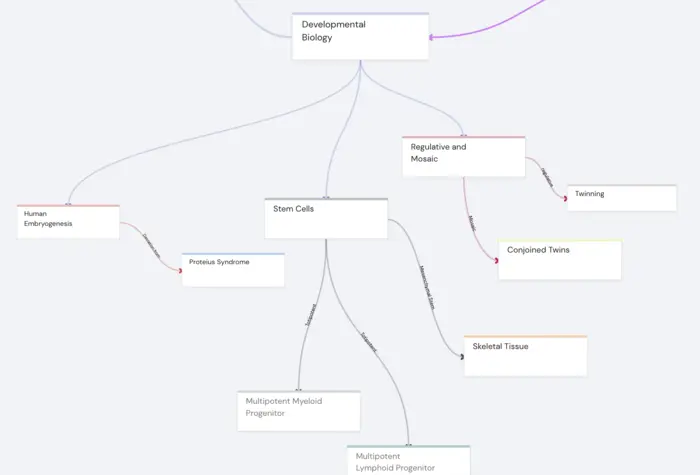Introduction to Zettelkasten and its Revolutionary Approach to Note-Taking
Are you daunted by the sheer volume of information you encounter in your quest for knowledge? Do you find yourself struggling to remember and apply what you've studied? You're not alone. Today's digital world is a goldmine of knowledge, but the challenge lies in effectively mining, managing, and mastering that knowledge. Enter the Zettelkasten method—an ingenious approach to note-taking that's revolutionizing the way lifelong learners like you handle information.
The Zettelkasten method, from the German words "Zettel" (note) and "Kasten" (box), is a knowledge management system that involves strategically jotting down and linking ideas rather than merely storing information. It's not just about recording details—it's about creating a dynamic network of interconnected thoughts. This method, popularized by German sociologist Niklas Luhmann, has transformed the way many lifelong learners and academics store, retrieve, and generate knowledge.
But why should you, an ambitious learner striving to master Mandarin, care about this note-taking system? The answer lies in the unique principles and practices of the Zettelkasten method. It's a system that mirrors the way our brains naturally work, breaking down complex information into bite-sized pieces and fostering connections between ideas. This not only enhances your understanding but also boosts your memory recall, making it a potent tool in your language learning journey.
In this article, we'll delve into the fascinating world of the Zettelkasten method, exploring its origins, principles, and implementation. We'll also look at its practical applications and benefits for learning efficiency and productivity, particularly for learning languages like Mandarin. So, let's embark on this exciting journey to unlock the power of note-taking and give your productivity a much-needed boost.
The Origins and Evolution of the Zettelkasten Method
From humble beginnings in a box of index cards to a digital revolution in note-taking, the Zettelkasten method has come a long way. Let's delve into its fascinating history and trace its course of evolution.
The Role of Niklas Luhmann in Developing the Zettelkasten Method
Niklas Luhmann, a German sociologist, masterminded the Zettelkasten technique back in the 1950s. His productivity was nothing short of extraordinary, publishing over 50 books and hundreds of academic articles throughout his career. However, he did not attribute this prolific output to his intellect but instead, to his note-taking methodology. This system? The Zettelkasten method.
The word 'Zettelkasten' is German for 'note box' or 'slip box', perfectly describing Luhmann's simple yet effective method. Using a box (or 'kasten'), he stored a growing collection of index cards (or 'zettels'). Each card held a solitary note or idea, written in his own words and as if intended for someone else. This ensured enough context was provided for each thought. He also ensured to include the source of the information for easy reference.
There were two types of notes Luhmann would typically jot down: fleeting notes, which were spontaneous thoughts or realizations, and literature notes, which were drawn from his consumption of content, such as books, articles, or podcasts. Luhmann's Zettelkasten served as a powerful system, not just for storing information but for generating knowledge.
The Transition from Physical Card Files to Digital Note-Taking
While Luhmann’s original Zettelkasten was a physical system, the modern Zettelkasten has evolved into a digital format. Transitioning from physical card files to digital note-taking has made the Zettelkasten method even more accessible and efficient.
Digital note-taking systems, like the ones provided by Traverse, have brought the Zettelkasten method into the digital era. With the advent of digital tools, it's now easier to create, organize, and search notes. You can also link notes together, forming a network of interconnected thoughts and ideas.
Even better, digital tools make it possible to carry your Zettelkasten with you wherever you go. Your notes are no longer confined to a physical box but are stored in the cloud, accessible from any device and at any time.
Moreover, a study conducted by the University of California found that using a digital note-taking system like the Zettelkasten can lead to a 30% increase in productivity and time savings. With such compelling advantages, it's no wonder the Zettelkasten method has become a favorite among academics, writers, and lifelong learners alike.
As we delve deeper into the Zettelkasten method, you'll discover how this revolutionary approach to note-taking can supercharge your learning and boost your productivity, whether you're writing a novel or learning Mandarin Chinese.

Understanding the Principles of the Zettelkasten Method
Imagine having a superpower that lets you effortlessly organize your thoughts, ideas, and knowledge, enabling you to focus on innovation and critical thinking. That's exactly what the Zettelkasten method offers. Let's now dive into the heart of this method and explore the two key principles that set the foundations for this revolutionary approach to note-taking: the Principle of Atomicity and the Principle of Connectivity.
The Principle of Atomicity: One Idea, One Note
The first principle, known as the Principle of Atomicity, revolves around the simple yet powerful concept of keeping one idea per note. This means that each note, or Zettel, in your Zettelkasten should focus on a single idea or concept, rather than housing multiple ideas in a single note. It's like having a conversation with a friend where you stick to one topic at a time, ensuring your discussions are focused and meaningful.
In the context of learning Mandarin Chinese, for instance, you could create an atomic evergreen note for each individual character learned, like 响. Each note includes the character itself, the meaning, the pronunciation, and any relevant visual associations or mnemonics used to memorize it. By doing so, you keep your notes succinct, clear, and easily referenceable.
This approach of atomizing your notes not only keeps your note archive organized but also makes your notes easily linkable and searchable. It's like breaking down a complex structure into its basic building blocks, allowing you to construct new ideas and insights with ease and flexibility.
The Principle of Connectivity: Linking Notes for Greater Insight
The second key principle, the Principle of Connectivity, is what truly unlocks the power of the Zettelkasten method. This principle focuses on creating meaningful connections between your notes. These connections, or links, serve as pathways that guide your thought process, allowing you to effortlessly navigate through your knowledge web.
In the Zettelkasten method, links are not just shortcuts to other files. They carry the context and rationale behind the connection between notes. For example, you could link two Chinese characters that share common radicals, highlighting the relationship between them. These links then become the building blocks for new ideas and insights, fostering a deeper understanding of the subject matter.
Remember, merely linking the notes isn't enough. It's crucial to clarify why and how each note is connected to another, whether it be through brief explanations, headings, or tags. This way, you not only enhance the readability of your notes but also enable your future self to quickly grasp the context behind each connection.
In essence, these two principles - Atomicity and Connectivity - are the lifeblood of the Zettelkasten method. They empower you to create a dynamic and interconnected knowledge web, setting the stage for enhanced learning, creativity, and productivity. Now, the question is - are you ready to harness the power of these principles and transform your note-taking approach?

Implementing the Zettelkasten Method: Practical Steps and Tools
Now that you're familiar with the principles behind the Zettelkasten method, let's dive into the practicalities of implementation. The process involves creating meaningful notes, organizing them effectively, and utilizing the right tools to make your note-taking journey seamless and productive.
Writing Effective Zettelkasten Notes: Tips and Techniques
The first step to mastering the Zettelkasten method involves taking smart, well-structured notes. Remember, each note should focus on one idea, ensuring clarity and focus. When reading or researching, jot down your thoughts and the reasons why you find a piece of information relevant. Writing information in your own words is encouraged, as it aids better understanding and retention.
When crafting these notes, highlight key elements. Include index information such as the author's name, book location, or link URL for reference. For longer notes, summarizing the key points or learning objectives in a bullet list can be helpful. The goal here is to write your notes in a way that you can quickly grasp the main idea when you come across it again.
The Role of Tags and Links in Organizing Your Zettelkasten
Organizing your notes effectively is crucial in the Zettelkasten method. This is where tags and links come into play. Assign each note a unique #category or number-ID. Link related notes together, creating an interconnected web of ideas. This way, you can effortlessly jump from one idea to another without having to search through your archive for specific keywords.
Consider creating Hub notes when your database becomes large. Hub notes are essentially summary notes about a certain topic with subtopics, acting as a table of contents or index. They help you maintain an overview of your notes, making the process of finding and accessing information quicker and easier.
Recommended Tools for Implementing the Zettelkasten Method: Craft, The Archive, and Traverse
While you can certainly implement the Zettelkasten method with pen and paper, digital tools can significantly enhance your experience. Craft, The Archive, and Traverse are excellent platforms that incorporate the Zettelkasten method into their design.
Craft embraces a beautiful, intuitive design and offers a seamless way to create and link notes. The Archive offers a minimalist, distraction-free environment for focused note-taking. Traverse, on the other hand, is a knowledge management software that's built around the Zettelkasten method, offering features such as auto-connecting related notes and syncing across multiple devices.
In conclusion, the Zettelkasten method is not just about taking notes - it's about creating a web of knowledge where ideas are interconnected and easily accessible. With the right techniques and tools, you can transform your note-taking practice into a powerful instrument for learning and creativity.
The Benefits of the Zettelkasten Method for Learning and Productivity
The Zettelkasten method is more than a note-taking system; it's a creative engine fuelling idea generation and an efficiency booster for learning and productivity. The secret lies in its unique principles that enhance creativity, improve learning efficiency, and fortify knowledge retention.
How Zettelkasten Enhances Creativity and Idea Generation
The Zettelkasten method encourages cross-pollination of ideas, sparking creativity and idea generation. Instead of categorizing notes into restrictive folders or boxes, the method encourages free-form notes that traverse across different disciplines. This interdisciplinary approach allows you to draw unexpected connections between unrelated concepts, igniting the proverbial lightbulb moments.
For instance, you might stumble upon a psychological framework that opens a new perspective for your marketing strategy. These connections, which you might have missed in a more rigid, hierarchical note-taking structure, are the lifeblood of creativity. This dynamic process of connecting the dots between different knowledge domains is a cornerstone of the Zettelkasten method and a driving force behind its power to enhance creativity and idea generation.
The Impact of Zettelkasten on Learning Efficiency and Knowledge Retention
The Zettelkasten method has a profound impact not only on learning efficiency but also on knowledge retention. It mimics the way our brains naturally work, creating an interconnected web of ideas rather than isolated chunks of information. This approach makes recall easier and learning more efficient.
A key principle of the Zettelkasten method is to write notes in your own words. This requirement forces you to understand a concept deeply enough to explain it yourself, which research shows significantly boosts retention. Moreover, the method's unique numbering system aids in information retrieval, further increasing efficiency.
For lifelong learners, like our Mandarin enthusiast, the Zettelkasten method offers a robust system for knowledge building. By breaking down complex Chinese characters into simpler components and understanding their connections, the method acts as a personal Zettelkasten, facilitating the learning of thousands of characters.
Moreover, the Zettelkasten method combats information overload by helping manage the avalanche of information in a structured yet flexible way. It allows you to absorb more knowledge while spending less time organizing it. This efficiency makes the Zettelkasten method an invaluable tool for anyone seeking to boost their productivity and learning outcomes.
In conclusion, the Zettelkasten method is not just a tool for note-taking. It's a powerful system that enhances creativity, improves learning efficiency, and strengthens knowledge retention. By leveraging this method, you can unlock your productivity potential and supercharge your learning journey.

Applying the Zettelkasten Method in Different Contexts
The beauty of the Zettelkasten method is its versatility. This method can be applied to any learning context, ranging from fiction writing to mastering Mandarin Chinese. The principles of atomicity and connectivity traverse disciplinary boundaries, making the Zettelkasten method a dynamic tool for knowledge acquisition in any field.
Use Cases: From Fiction Writing to Learning Mandarin Chinese
In the realm of fiction writing, the Zettelkasten method can serve as a powerful narrative tool. By treating each plot point, character trait, or thematic element as a separate note, writers can create a complex web of interconnected ideas. This can lead to more nuanced storytelling, as well as unexpected plot twists and character developments that emerge from the connections between notes.
On the other side of the spectrum, the Zettelkasten method can be a game-changer for language learning. Take Mandarin Chinese, for example. The language's complex structure, with its unique characters and tonal nuances, can pose significant challenges for learners. However, by breaking down these complexities into manageable notes, learners can enhance their understanding of the language.
The Zettelkasten method aligns perfectly with the principle of spaced repetition, a proven technique for effective learning. This encourages reviewing information at increasing intervals over time, cementing the recall of Chinese characters, phrases, and words. Moreover, the method promotes connected note-taking, allowing learners to visually organize their thoughts and draw connections between ideas. This approach aids in breaking down the complex structure of Mandarin and creating a mental map that facilitates easier recall.
How Traverse and Mandarin Blueprint Leverage the Zettelkasten Method for Language Learning
When it comes to applying the Zettelkasten method to Mandarin learning, the digital tools provided by Traverse and Mandarin Blueprint can offer a unique and effective solution. Traverse, a digital tool that incorporates the principles of the Zettelkasten method, enables learners to capture fleeting notes quickly, create literature notes, design permanent notes, and even import Anki decks. This not only streamlines the learning process but also enhances the retention and recall of information.
Moreover, Mandarin Blueprint, a resource for Mandarin learners, can be integrated with Traverse for a comprehensive learning experience. By systematically organizing your learning materials and actively engaging with them, Mandarin learners can achieve confidence and fluency in the language.
In essence, the Zettelkasten method, coupled with Traverse and Mandarin Blueprint, can be a steadfast companion in your language learning journey. Whether you're mastering Mandarin or penning your next bestselling novel, the Zettelkasten method can transform your learning and creative processes, setting you on the path to success.
Conclusion: Unlocking Your Productivity Potential with the Zettelkasten Method
In the vast universe of note-taking and knowledge management, the Zettelkasten method shines brightly as a revolutionary approach. This unique system, born out of the pragmatic ingenuity of a social scientist, has evolved into a digital powerhouse that can supercharge your productivity and learning efficiency.
Recap of the Key Principles and Benefits of the Zettelkasten Method
The Zettelkasten method revolves around two primary principles: atomicity and connectivity. Each note in your Zettelkasten is an atomic unit that encapsulates a single idea. These ideas are then interlinked, forming an intricate web of interconnected thoughts that mirror the natural workings of our minds.
By applying this method, you're not just taking notes; you're building a personalized knowledge repository. The Zettelkasten method boosts your ability to retain information and draw creative insights from it. It turns note-taking into a dynamic, engaging process, fostering a deeper understanding and recall of the topics at hand.
Moreover, the Zettelkasten method offers measurable benefits. Research from the University of California shows that using a digital note-taking system like Zettelkasten can lead to a 30% increase in productivity and time savings.
Encouragement for Readers to Implement the Zettelkasten Method in Their Own Learning and Work
While the Zettelkasten method might seem daunting at first, remember that the most satisfying journeys often start with a single step. Start by taking smart notes, rewriting them for your Zettelkasten, adding structure, and regularly reviewing and asking questions. Gradually, you'll begin to see the transformative power of this approach.
Whether you're a lifelong learner navigating the labyrinth of Mandarin Chinese characters or a writer seeking to capture and connect your ever-flowing stream of ideas, the Zettelkasten method can be your secret weapon. It's not merely about storing information; it's about sparking connections, generating insights, and transforming your knowledge into a powerhouse of productivity.
So, as you embark on your next learning adventure, consider giving the Zettelkasten method a try. With tools like Traverse at your fingertips, you're well-equipped to unlock the full potential of this revolutionary approach to note-taking. After all, as Jim Kwik, a renowned mind coach stated, "We need to understand how our minds work so we can work our minds better." With Zettelkasten, you're doing just that.
Take the leap, and let the Zettelkasten method transform your learning and productivity journey. You'll be amazed at where it takes you.

